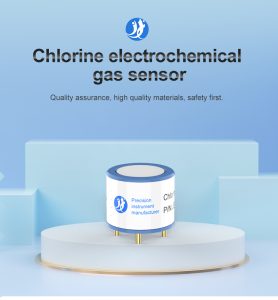Workplace safety is a top priority for employers and employees alike. One critical aspect of ensuring a safe work environment is monitoring the presence of hazardous gases that can pose serious health risks. Gas sensor technology plays a vital role in detecting and monitoring such gases, enabling early detection, prevention, and mitigation of potential hazards. In this article, we will explore the benefits of using gas sensor technology to improve workplace safety by identifying and addressing gas-related risks.
Detecting Toxic Gases:
Gas sensors are specifically designed to detect and measure a wide range of toxic gases commonly found in industrial settings. These gases may include carbon monoxide (CO), hydrogen sulfide (H2S), ammonia (NH3), and various volatile organic compounds (VOCs). By continually monitoring the air quality in the workplace, gas sensors provide real-time data on gas concentrations. This data can alert employees and employers to potential hazards, enabling them to take immediate action to prevent exposure and mitigate associated risks.
Early Warning System:
Gas sensors act as an early warning system, providing timely alerts when gas concentrations exceed predetermined thresholds. This enables employees to evacuate or take appropriate safety measures promptly. By having gas sensors strategically placed throughout the workplace, potential gas leaks or increases in gas levels can be quickly detected, allowing for faster response times and reducing the likelihood of accidents or health issues.
Preventing Asphyxiation and Suffocation:
Certain gases, such as carbon dioxide (CO2) and nitrogen (N2), can cause asphyxiation or suffocation when present in high concentrations. Gas sensors can continuously monitor these gases and trigger alarms if the levels exceed safety limits. This allows employees to evacuate hazardous areas promptly and prevents potentially life-threatening situations. Gas sensors are particularly crucial in confined spaces, where the risk of gas buildup is higher and rapid detection is essential for worker safety.
Ensuring Proper Ventilation:
Proper ventilation is crucial for maintaining a safe and healthy work environment. Gas sensors can provide valuable information on indoor air quality (IAQ), including carbon dioxide (CO2) levels, which indicate the effectiveness of ventilation systems. High CO2 concentrations suggest inadequate airflow and potential accumulation of other harmful gases. By monitoring CO2 levels, employers can ensure proper ventilation, preventing the build-up of toxic gases, and promoting employee well-being and productivity.
Mitigating Fire and Explosion Risks:
Some gases, such as methane (CH4) and propane (C3H8), are highly flammable or explosive in the presence of an ignition source. Gas sensors can detect these combustible gases, allowing for prompt actions to prevent fires and explosions. The early detection of even trace amounts of these gases can initiate safety protocols, such as shutting off ignition sources or evacuating the area, minimizing the risk of accidents and potential damage to property and personnel.
Integration with Safety Systems:
Gas sensor technology can be integrated with safety systems, such as fire alarm systems and building management systems. This integration allows for centralized monitoring and control of gas sensors, enabling a comprehensive approach to workplace safety. If a gas alarm is triggered, it can automatically initiate emergency protocols, such as activating ventilation systems, triggering evacuation alarms, or notifying designated personnel. This integration ensures swifter response times and streamlines overall safety procedures.

Conclusion:
Workplace safety is paramount to protect employees and maintain a productive working environment. Gas sensor technology offers an effective solution for identifying and mitigating the risks associated with hazardous gases. By continuously monitoring gas concentrations, gas sensors provide early detection capabilities, facilitating timely responses and preventing potential health hazards, asphyxiation, suffocation, fires, and explosions. Integrating gas sensors with safety systems further enhances workplace safety by automating emergency protocols. Employers who prioritize the implementation of gas sensor technology demonstrate their commitment to employee well-being and set the stage for a safer working environment.
 : +86 155 8830 2704
: +86 155 8830 2704 : jxdziot@gmail.com
: jxdziot@gmail.com
